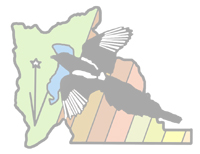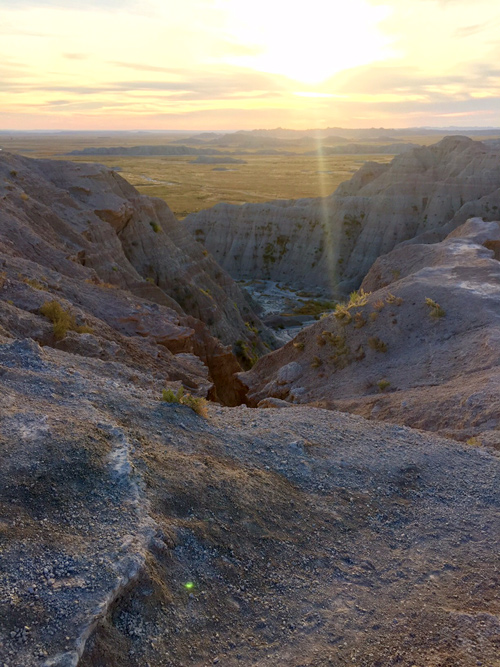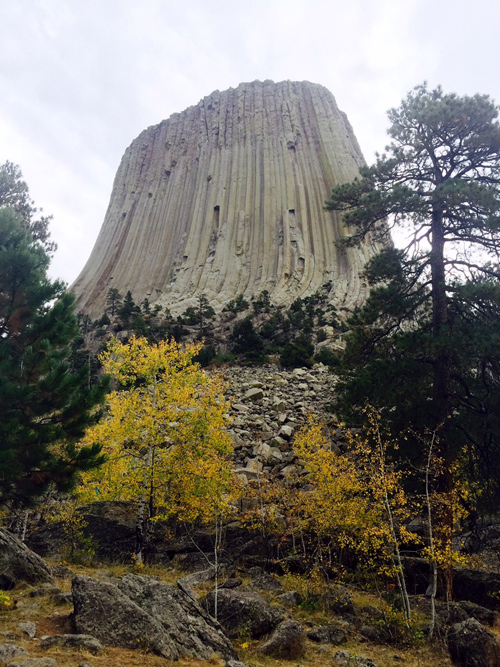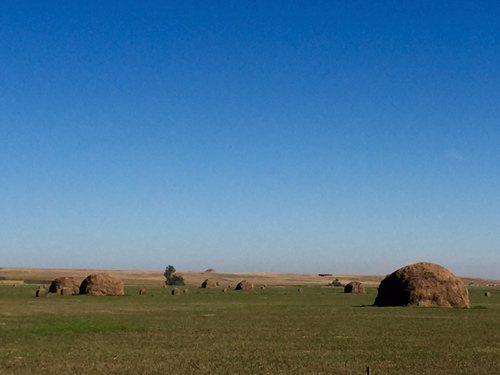Utah County Birders Newsletter
|
 |
Contents
October Meeting
Upcoming Field Trips
Captainís Log
Bird of the Month
Field Trip Report -
River Lane
Field Trip Report
- Antelope Island
Backyard Bird of the Month
September Hotline Highlights
OCTOBER MEETING:
Thursday, October 8th, 2015 - 7:00 pm
UCB Monthly Meeting - Jeff Cooper will give
a presentation on why he blogs. Jeff is a skilled photographer and a great bird
blogger.
Meet at 7:00 pm at the Monte L. Bean Museum. 645
East 1430 North, Provo, UT
http://mlbean.byu.edu/
Saturday, October 10th, 2015. Provo Airport Dike Big Sit - 6:00 am to Sunset. - We will sit out at the Southwest Corner of the Provo Airport Dike and watch birds from 6:00 am to sunset. Keeli Marvel will lead the sit. Come join us anytime and stay as long as you like. This will be our 14th year participating in the big sit. http://www.birdwatchersdigest.com/bwdsite/connect/bigsit.php Provo Airport Dike Map - http://www.utahbirds.org/counties/utahco/provoairport.html
Saturday, October 17th. Museum of Natural History - 9am-noon. We will be going to the Museum of Natural History in Salt Lake to see the Birds of Paradise exhibit and tour the rest of the museum. Meet at the American Fork Main Street park and ride on the northwest side of the freeway on Pioneer Crossing. We will carpool up to the museum. If anyone feels like eating lunch afterwards we could eat at the museum cafe. The entry fee for the museum is $13 for adults, $11 for seniors, and if we get a large enough group we can get the group rate which is $2 cheaper.
We are actively recruiting people to lead local half-day field
trips, any time, any place. If you would like to lead a field trip or if you
have any ideas for this yearís field trips, please contact Bryan Shirley at -
bt_shirley@hotmail.com
Utah County Birders Captainís Log:
October 2015
by Keeli Marvel
 |
|
Badlands
National Park |
 |
|
Badlands
National Park |
 |
|
Devil's Tower
National Monument |
 |
|
Haystacks in
South Dakota |
I promised a report on birding in South Dakota last month, and here it is.
Unfortunately, the birding was challenging and the opportunities were less than
Iíd hoped, as they often are when not traveling specific for the purpose of
birding. My parents and husband and I took off for the Black Hills area of South
Dakota last Thursday. Rapid City, SD is right on the northeastern edge of the
Black Hills. Itís not a huge city, and less than a mile north of our hotel the
roads quickly become graded gravel surrounded by rolling prairie.
On Friday morning I got up and headed out to do a little birding before everyone
else was up. I headed north and west of Rapid City to a hot spot that had popped
up on Ebird Ė Sevey Lake on Elk Creek Road. When I finally found it, it was more
of a puddle than a lake. Birding was slow, but I saw a Prairie Falcon swoop at
and miss a Lark Sparrow, and then chase unsuccessfully after some Gadwall that
were in the pond. I also saw several Vesper Sparrows which I tried
unsuccessfully to turn into Lark Buntings. Before the Prairie Falcon flushed all
the birds from the pond I saw a Lesser Yellowlegs, a sandpiper I didnít get to
ID before it flew, a handful of Killdeer, and a Sora sneaking through some reeds
along the side of the road.
Later that day we headed to Keystone, which is just outside Mt. Rushmore. We
rode a historic train from Keystone to Hill City, and along the ride saw tons of
wild turkeys, a few turkey vultures, and a couple of raptors that were too far
away for me to ID. The lighting ceremony at Mt. Rushmore that we attended that
evening was pretty cool. I highly recommend sticking around in the evening for
it if anyone is headed that way. They played a video telling the stories of the
presidentsí accomplishments that inspired Borglum, the sculptor of Mt. Rushmore
to make them his subject. After the video, the audience was invited to stand and
sing the national anthem while they lit up the heads on Mt. Rushmore, and then
all of the veterans and current military service members were invited to the
stage to help retire the flag.
Saturday morning I headed out early again before everyone else was up for the
day. This time I drove north from my hotel a couple miles until there was more
prairie than homes. I was really hoping to see a Lark Bunting, and I tried
really hard to turn a few Vesper Sparrows into one, but without any luck. I did,
however, pick up a pair of lifer Clay-colored Sparrows. I also saw a few other
birds out there including White-crowned Sparrows, Brewerís Blackbirds, and a
couple of Kestrels. Later that morning we headed south to Wind Cave National
Park. The cave itself is a little less impressive in terms of diversity of cave
formations compared to others Iíve been to (Timpanogos Cave Included), but it
was pretty cool to learn how much of the cave system they think has yet to be
discovered (hundreds of miles). By the time we were finished with the tour, it
was lunch time so we stopped at a picnic area just down the road from the
visitor center. There I picked up some American Robins, a Hairy Woodpecker, a
Spotted Towhee, and a migrating Tennessee Warbler, my second and only other
lifer for the trip. From there we headed east to our second National Park for
the day: Badlands National Park.
I didnít see any notable birds in Badlands, but there was a herd of Bighorn
Sheep not far from the north entrance to the park grazing right off the side of
the road. It was recommended to me that we visit Badlands either early or late
in the day when the light was favorable, and Iím glad we took that
recommendation. The colors were amazing and the views were incredible with the
sun setting and the almost full moon rising over the formations in the park.
Badlands National Park is definitely worth the visit if you like unique scenery.
Sunday was a driving day, and I spent most of it in the car traveling to North
Dakota and back. On the way, however, we stopped for a few minutes outside
Sturgis at a little lake called Bear Butte Reservoir/State Park. I birded a
brushy area along the north side of the lake and saw tons of sparrows including
more White-crowned, Clay-colored, and Vesper Sparrows. I picked up a
Yellow-breasted Chat and a small flock of Red-winged Blackbirds along the lake
shore. On the lake there were Canada Geese and American Coots, and I saw at
least two Franklinís Gulls cruising around in the air. Off in the distance I
could hear a Blue Jay calling.
On the rest of the drive up I saw several hawks including Red-tailed Hawks, a
couple of Ferruginous Hawks, and one Golden Eagle near some rocky hills outside
one of the small one-horse towns we drove through. Itís weird to drive across
the prairie in that part of the country. I decided while driving through Skull
Valley yesterday that most of our valleys here in Utah are bordered by
mountains, and having them there makes me feel secure, like having giant walls
around me. The prairie feels infinite in some places, like if you go too far,
youíll fall right off the edge of the earth. At the same time, I really enjoyed
the green rolling hills, with the grass waving in the wind. It was refreshing to
see so much open space that looked green and productive, as opposed to our stark
desert brush land and salt flats. I donít think Iíve ever seen as many
White-tailed Deer or Pronghorn as we saw driving across Wyoming and between
North and South Dakota.
On the drive home on Monday we stopped briefly at Devilís Tower in Wyoming.
Devilís Tower is a National Monument that is a remnant of volcanic upwelling
that was left behind when the surrounding land eroded away. Itís a pretty neat
place, and definitely worth a stop. A storm was rolling through while we were
there, and it was raining lightly, but there were Townsendís Solitaires and
Black-capped Chickadees calling and singing along the trail at the base of the
tower.
We got home Monday night exhausted from all the driving, but having seen 2
lifers, visited 2 National Parks and 2 National Monuments, and having made some
good memories.
Happy Autumn Equinox and Happy Birding!
Keeli Marvel
 |
|
photo of a
full-sized wood carving of a Green Heron, carved by Steve Carr |
Green Heron
Butorides virescens
by Steve Carr
[Rerun article from June 2011]
The Green Heron (Butorides virescens) is the smallest member of the heron family
(Ardeidae) in North America, except for the tiny Least Bittern. It measures 18
inches long when fully stretched out, which it almost never is except when
diving for prey. When usually observed, its neck is tightly pulled into the
shoulders giving it a somewhat scrunched-up look, so that it is more nearly
13-14 inches long. Wingspan is 26 inches.
The greenish coloration is almost more of a blue-green on the wings, crown, and
long filamentous plumes on the back. The face, nape, throat, and chest are a
deep chocolate brown and the legs and feet are yellow. In its usual darkened
habitat the bird appears almost black.
The habitat usually consists of the edges of swamps and marshes, among cattails,
bulrushes, and other marsh reeds, and along slowly moving streams in darkened
forests. They usually are seen alone or with one or two others, perched quietly
on a stream bank or submerged log intently watching for errant fish or frogs or
invertebrate animals to swim by. On the other hand, I have seen them in a dry
field full of old sunflower stalks, hundreds of yards from the nearest water,
feeding on crickets and other grasshopper-like insects. If disturbed, they may
act like bitterns in freezing next to some vegetation, or they may suddenly take
flight with a loud squawk. When flying, they take on the appearance of a crow Ė
fairly rapid, deep wingbeats, compared to the larger herons and egrets. They
also readily fly in and land on trees and bushes up to 15-20 feet tall. They
nest in a variety of locations, including willow thickets, open marsh, and
wooded areas from 5 to 35 feet high. Three to five pale greenish-blue eggs are
laid and both parents do the incubating for about 20-21 days. Chicks are
altricial and begin to fly at three weeks.
Green Herons are among very few North American birds known to use tools to
forage. It has been observed to drop a feather, small leaf, or a tiny twig onto
the water, so that when a fish swims up to investigate this possible food source
for itself, it becomes prey for the heron.
In the 1940ís, the bird was known as Anthonyís Green Heron or Eastern Green
Heron, as well as Green-backed Heron. In fact, Volume 1 of Handbook of the Birds
of the World, published in 1992, p. 417, still lists it as Green-backed Heron,
where it is still lumped with what is now known as the Striated Heron (Butorides
striatus). Then, in about 1995, after being split from the Green Heron, the
Striated Heron is the common small heron of the eastern hemisphere and South
America.
Range maps for this species are a little disconcerting. They all show the large
breeding range east of the Rocky Mountains up to southern Ontario and barely
into Manitoba. Also shown is the western range up the west of the Cascade
Mountains to Vancouver, BC. Permanent range includes the Gulf Coast from Florida
to Texas and down into Mexico, all of Central America, and the Caribbean area.
Most of California and the Baja Peninsula are also covered. One map shows the
permanent range up along the entire Atlantic seaboard, another shows nothing
there. One map
shows several breeding areas in New Mexico, Arizona, and southern Utah. Another
shows almost nothing in Arizona and New Mexico, but a permanent range up along
the Colorado River into the St. George, Utah, area. There are at least two to
three pairs in the St. George valley around several golf courses, the Tonaquint
Nature Center, and along the Virgin River. According to the Utah Bird Checklist,
the Green Heron has been seen in the following 13 counties: Beaver, Davis,
Emery, Grand, Juab, Millard, Morgan, Rich, Salt Lake, Uintah, Utah, Washington,
and Wayne. I have
personally seen them in Washington, Davis, and Salt Lake counties. Surprisingly,
the bird has been seen in such far away places as the Azores Islands off Africa,
Great Britain, Greenland, and Hawaii.
Bird Guide, Part 1, Water and Game Birds, and Birds of
Prey, Chester A. Reed, Worcester, Mass.,
1908.
Birds of North America, A Golden Field Guide, Chandler Robbins, et al., Golden
Press, 1966.
Complete Birds of North America, National Geographic Society, Washington, DC,
2006, p.119. A Field Guide to the Birds (Eastern and Western editions), Roger
Tory Peterson, Houghton Mifflin Company, Boston, 1934, 1941.
Field Guide to the Birds of North America, National Geographic Society,
Washington, DC, 1999. Handbook of the Birds of the World, Lynx Edicions 1992,
Volume 1, pp. 417-418.
Lives of North American Birds, Kenn Kaufman, Roger Tory Peterson Institute,
1996, p. 58.
The Sibley Guide to Birds, Sibley, David A., National Audubon Society, 2000.
(Also available in the
Sibley Guide to Western Birds.)
If you would like to
write an article for the Bird of the Month, please contact
Machelle -
machelle13johnson@yahoo.com
Click here for past 'Birds of the Month'.
Field Trip Report
River Lane - September 12, 2015
by Machelle Johnson
We met early on Saturday Sept 12 to bird River Lane. There wasn't a lot of
activity in the fields as we headed West, just some Sandhill Cranes and
White-faced Ibis's, and Canada Geese flying overhead. We did stop to check out a
dark raptor in a big tree. We thought it was a Peregrine Falcon, but that was
kinda weird. Turns out we were right. A Peregrine Falcon in a big tree in the
fields heading West to River Lane. Cool. Once we turned on to River Lane we saw
more bird activity. There were several American Kestrels chasing each other
around, including one that was abnormally dark. We thought it might possibly be
a Merlin, but it was just a Kestrel, probably looked dark due to light or
something. A Belted Kingfisher did a rattling fly-by on his was to the pond
behind the house on the West side and there was a family of Ring-necked
Pheasants along the fence line.
Our first stop on the dirt road was pretty quiet. We went down a trail heading
North, but it was pretty quiet. Back on the main dirt road walked down the road
to a spot that was teeming with flitting little birds. There were so many, we
were calling out birds right and left! We had warblers, gnatcatchers,
goldfinches and sparrows in the trees and Common Nighthawks overhead as well as
perched on branches. Once we had our fill at that spot we went on out to the
beach and got good looks at several American Avocets, Gulls, Terns and 5
Sanderlings.
Here is the complete list for River Lane and Sandy Beach:
Sandhill Crane
White-faced Ibis
Black-billed Magpie
American Kestrel
Swainson's Hawk
Canada Geese
Killdeer
Peregrine Falcon
House Finch
House Sparrow
Western Meadowlark
American Robin
Belted Kingfisher
Red-winged Blackbird
Barn Swallow
Bank Swallow
Tree Swallow
Ring-necked Pheasant
Common Night Hawk
Northern Harrier
Ruby-crowned Kinglet
Northern Flicker
Yellow-rumped Warbler
Orange-crowned Warbler
Virginia's Warbler
Yellow Warbler
Chipping Sparrow
Song Sparrow
White-crowned Sparrow
Black-capped Chickadee
Blue-gray Gnatcatcher
American Goldfinch
Gray Catbird
Mourning Dove
Eurasian-collared Dove
Caspian Tern
American Avocet
Ring-billed Gull
California Gull
Franklin's Gull
Sanderling
Red-tailed Hawk
Turkey Vulture
Field Trip Report
Antelope Island - September 26, 2015
by Machelle Johnson
On Sept 26 a few of us went to Antelope Island. The
water has receded dramatically. It was practically dry to the first bridge. We
had decided that we were going straight to the ranch first, no stopping on the
Causeway until we were on our way out. A Chestnut-sided warbler had been
reported at the ranch for a few days as well as a few other great birds, but we
didn't see any of them, we couldn't find the Great-horned Owl that resides in
the grove either. It was a bit disappointing, but hey, a bad day birding is
still better than a good day (fill in the blank with your choice, my choice is
'at work').
Here is a complete list of Antelope Island:
Meadowlark
Barn Swallow
Red-breasted Nuthatch
Song Sparrow
Yellow-rumped Warbler
White-crowned Sparrow
Orange-crowned Warbler
Red-naped Sapsucker
Wilson's Warbler
Hermit Thrush
Dark-eyed Junco
Spotted Towhee
Cedar Waxwing
Killdeer
Ring-necked Pheasant
Horned Lark
Sage Thrasher
Black-billed Magpie
Eurasian Collared Dove
Great-Horned Owl (at the Bison Corrals)
Mourning Dove
Rock Wren
American Coot
American Avocet
Long-billed Curlew
Willet
Northern Shoveler
California Gull
Common Raven
Franklin's Gull
We also went to Farmington Bay:
White-faced Ibis
Pied-billed Grebe
Canada Geese
American Kestrel
Snowy Egret
Franklin's Gull
Gadwall
American Coot
Mallard
Clark's Grebe
Killdeer
Western Grebe
Ruddy Duck
American Wigeon
Northern Shoveler
Barn Swallow
Double-crested Cormorant
Ring-necked Pheasant
Great-blue Heron
Eared Grebe
Greater Yellowlegs
Red-winged Blackbird
Lesser Yellowlegs
Least Sandpiper
Black-crowned Night Heron
September 2015
Jack Binch - Sandy
On the 29th I was trying to ID a hummingbird and a Red-breasted Nuthatch landed on my platform feeder. Only the third one I have seen at home.
Yvonne Carter -
Highland
First time in my yard! a Mountain Chickadee and still had until the other
day a few hummingbirds, still a lot of Western Scrub Jays.
Jeff Cooper - Pleasant Grove
I heard a Barn Owl screaming from the darkness while talking to a
neighbor on my front porch the other night. That was a nice birding moment that,
like most, went completely unnoticed by my friend who did not have an ear tuned
to the sounds of our birds.
Eric Huish - Pleasant Grove
Orange-crowned Warblers - Two together hung out in the yard for a few day. One was missing its tail.
Milt Moody - Provo
Some mountain birds are starting to arrive in my Provo yard. A Red-breasted Nuthatch came to my bird bath for a drink and a Pine Siskin came to my thistle feeder.
Leena Rogers - Provo
We had a surprise visit from a Red-breasted Nuthatch. It took a quick dip
in our shady birdbath. What a treat!
Dennis Shirley - Shemya Island, Alaska
Since my big backyard till the 21st of Sept. was still Shemya Island, my best
bird was a MARSH SANDPIPER, a Code #5 ABA bird. It was a new record for
the island and only the 4th or 5th time for North America. It's still good to be
back!!
Alton Thygerson - Provo
Band-tailed Pigeons - Infrequent, unpredictable visitors, sometimes
accompanying Eurasian Collared-Doves.
Report your favorite backyard bird
each month to Eric Huish at 801-360-8777 or
erichuish@gmail.com
The Utah County Birders Newsletter is now online only/mostly.
We've decided to stop the regular paper mail version of the UCB Newsletter. This will save our club on Printing, Postage and Paper. If you would like an email notice each month when the Newsletter is posted online please send an email to Eric Huish at erichuish@gmail.com.
We are willing to print the online version of the newsletter and mail it out to anyone who still wants a paper copy or who doesn't have internet access. If you know of anyone who enjoys the UCB Newsletter but doesn't have internet access please let Eric Huish or Keeli Marvel know and we will make sure they get a copy.
Printable Version of this UCB Newsletter